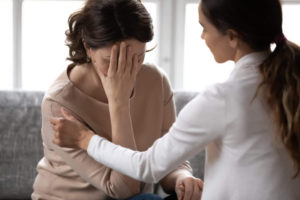Since 1998, when “the little blue pill” called Viagra created a revolution in treating male sexual dysfunction, expectations have been high that “the little pink pill” – an equally powerful medication to help women — will follow soon. The task, however, has proven to be more difficult than originally expected – as of now, not a single compound has been officially approved to treat sexual dysfunction in women. But this is likely to change. Several compounds, vying for the title of “the little pink pill”, are in different stages of development and some of them may hit the market as soon as this year.
In our previous post, we discussed what every woman needs to know about “the little pink pill”. But it takes two to tango. Here’s what every man needs to know.
How is sexual dysfunction in women different from sexual dysfunction in men?
The most common form of sexual dysfunction in males is Erectile Dysfunction (ED), i.e., inability to develop and sustain erection. In other words, affected men want to have sex, but cannot perform. By helping redirect the flow of blood to the critical male organ, Viagra, Cialis, and similar medications address the disorder.
Women are different. The most common type of female sexual dysfunction is Hypoactive Sexual Desire Disorder (HSDD). Women with HSDD can perform in bed and even reach orgasms; however their libido, i.e., interest in sex is low or non-existent. HSDD may be life-long or situational, caused by, for instance, birth and nursing of a child.
How common is HSDD?
Estimates vary. In 2013, New York Times suggested that up to 30% of otherwise healthy women between the ages of 20 and 60 are affected. Sprout Pharmaceutical and Palatin Technologies, two companies actively developing medications to treat HSDD, report 43% and 12% respectively. Even at the lower end of the range, it is likely that well over ten million women in the USA alone experience HSDD. Both post- and pre-menopausal women can be affected.
How do I know that my partner is affected by HSDD?
Hypoactive women describe their symptoms as “declining interest in sex”, “loss of spark”, “always not in the mood”, “lack of passion”, or “being unexcited”, regardless of whom they are with and how long they’ve been together. If you hear this often, particularly if you are in otherwise loving relationship, your wife or girlfriend may be affected.
It goes without saying that proper diagnosis must be left to a trained physician, preferably somebody who has experience in female sexual health. Unfortunately, many women consider declining desire “a fact of life” and try to hide it in order “not to disappoint my partner”. This is a huge mistake. Low desire is a medical condition and should not be ignored. In loving relationships, it is the role of the male partner to encourage his wife of girlfriend to seek medical help.
What is the mechanism of HSDD?
Physiology and psychology of female desire is an exceptionally complex interplay of hormones and neurochemicals. What is clear, however, is that the cause of depleting libido is primarily in the woman’s brain, not her genitalia. In fact, HSDD is recognized as a mental disorder. This is one of the reasons why experimental treatments of HSDD with testosterone or Viagra-like substances showed limited effectiveness.
What are the treatment options?
As mentioned before, as of the time of this writing, there are no FDA-approved medications to treat HSDD. There are, of course, multiple “supplements” purporting to do wonders; however, their effectiveness and, more importantly, safety are unproven. At the same time, several promising medications are in FDA-supervised clinical trials. These compounds (distant relatives of anti-anxiety medications) work on readjusting the interplay of serotonin and dopamine, two neurochemicals believed to be responsible for the desire.
How promising are the results of clinical studies?
Anecdotally, some participants in studies conducted at Boston Clinical Trials and other research centers reported dramatic improvement in their sexual appetites. Yet other participants experienced limited or no change. It is important to keep in mind that the studies were double-blinded, i.e., neither the patient, nor the staff members knew whether the person received an investigational drug or a placebo.
When should we expect to see the little pink pill on the market?
The little pink pill is coming. In 2014, FDA identified HSDD as one of 20 disease areas of high priority. Given the FDA focus and the promise of a multibillion market, there is little doubt that the treatment for HSDD will become a reality soon. Until it happens, however, the only way to access the promising medications is by participating in clinical trials.
To learn more about Boston Clinical Trials and the studies we conduct, including Female Sexual Dysfunction, please click here.








